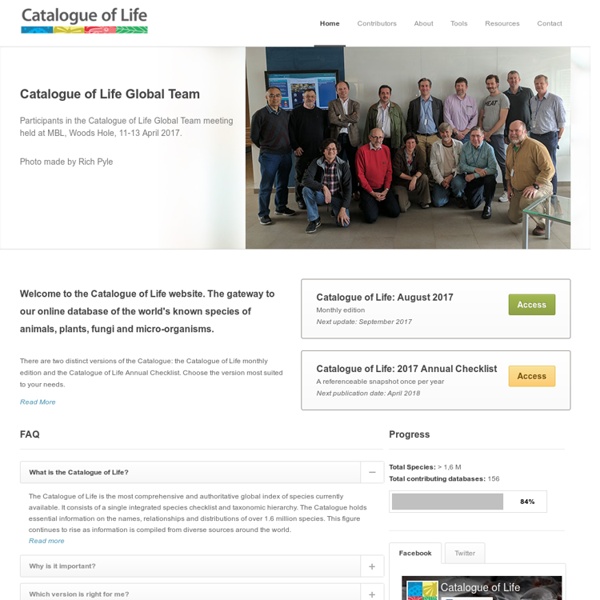Tree of Life Web Project
The Tree of Life Web Project (ToL) is a collaborative effort of biologists and nature enthusiasts from around the world. On more than 10,000 World Wide Web pages, the project provides information about biodiversity, the characteristics of different groups of organisms, and their evolutionary history (phylogeny). Each page contains information about a particular group, e.g., salamanders, segmented worms, phlox flowers, tyrannosaurs, euglenids, Heliconius butterflies, club fungi, or the vampire squid. ToL pages are linked one to another hierarchically, in the form of the evolutionary tree of life. Starting with the root of all Life on Earth and moving out along diverging branches to individual species, the structure of the ToL project thus illustrates the genetic connections between all living things.
Molecular Expressions Microscopy Primer: Introduction to Microscopy
Introduction to Optical Microscopy,Digital Imaging, and Photomicrography This treatise on optical microscopy is divided into several sections that are available through the links displayed immediately to the left (in the darker navigational boxes) and below. In order to print the entire microscopy primer as a paper document, you must download each link independently, send the file to your printer, and put the results together. In the Bibliography, we have included links to other works on optical microscopy and our section on Web Resources contains links to other microscopy sites on the Internet.
Natural Fibers: - Uttarakhand Bamboo & Fiber Development Board
Fibers of both plant and animal origins have been utilized since the beginning of human civilization. They have been used to provide shelter and clothing to shield us against the extremities of nature and paper to record history. A host of household utility items like baskets, sacks, ropes, and rugs have also been made through them as is still done in rural areas of the developing world.
Satellite Geodesy, IGPP, SIO, UCSD
NEW! SRTM15_PLUS V1 November 29, 2014 NEW! SRTM30_PLUS V11 November 29, 2014 NEW!
Compound Interest Calculator (Daily, Monthly, Yearly Compounding)
Daily, monthly or yearly compounding The compound interest calculator includes options for: daily compounding monthly compounding quarterly compounding half yearly and yearly compounding negative interest rates Your savings account may vary on this, so you may wish to check with your bank or financial institution to find out which frequency they compound your interest at. Our compound interest calculator allows you to enter a negative interest rate, should you wish. Compounding of interest
Global Diversity and Phylogeny of the Asteroidea (Echinodermata)
Discussion Fossil History Recent views on the most likely Paleozoic source for post-Paleozoic asteroids differ significantly [4], [5], [6], [111], but authors agree that the Paleozoic-Mesozoic transition marked a time of major extinction and re-diversification, thereby allowing separation in this paper based on time.
The Big Five Personality Test
"A fantastic test. I’d definitely recommend it to friends." - Steven Q.
SkillSet Solutions
Visual Guide Series of Books, eBooks, Quick Reference Guides, Photos for your Training Needs, and ready-to-use PowerPoint Presentations! Copyright © 2011 Brian D. Prystupa



